Table of content
SHARE THIS ARTICLE
Is this blog hitting the mark?
Contact Us
Table of Contents
- Introduction
- What Is Shift Left Testing?
- What Is Shift Right Testing?
- What’s Actually Working in 2025?
- Quick Comparison: Shift Left vs. Shift Right
- Common Myths to Drop
- What Winning Teams Are Doing in 2025
- Conclusion: In 2025, Quality Is a Continuous Loop
Introduction
Let’s be real — testing today is nothing like it was five years ago.
With teams chasing faster releases, higher quality, and smoother deployments, QA practices have evolved. And two strategies everyone’s still talking about are Shift Left and Shift Right.
But here in 2025, it’s not about picking a side — it’s about what’s actually working in the real world.
If you’re a Software Tester, QA Engineer, DevOps lead, or even a CTO or Product Director looking to sharpen your quality game, this blog is for you.
Let’s break it down.
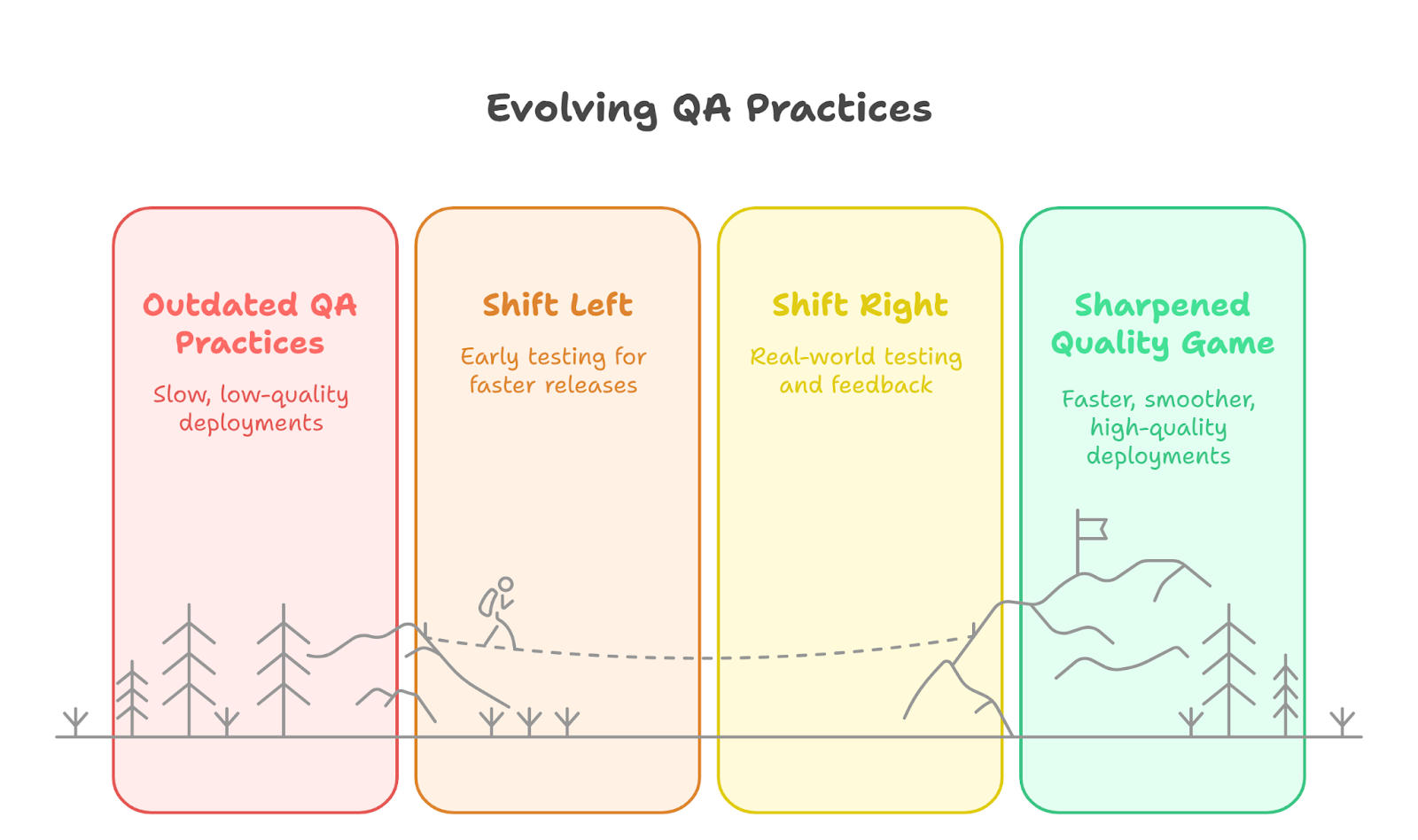
What Is Shift Left Testing?
Think of Shift Left as testing early — way early — in the development lifecycle. The goal is simple: Catch bugs when they’re cheap and easy to fix.
In 2025, Shift Left looks like this:
- Unit, API, and UI automation running in CI/CD pipelines
- Devs practicing TDD or BDD
- Infrastructure-as-code checks before provisioning
- AI-powered test generation and static analysis tools
It’s like double-checking your blueprint before pouring the concrete.
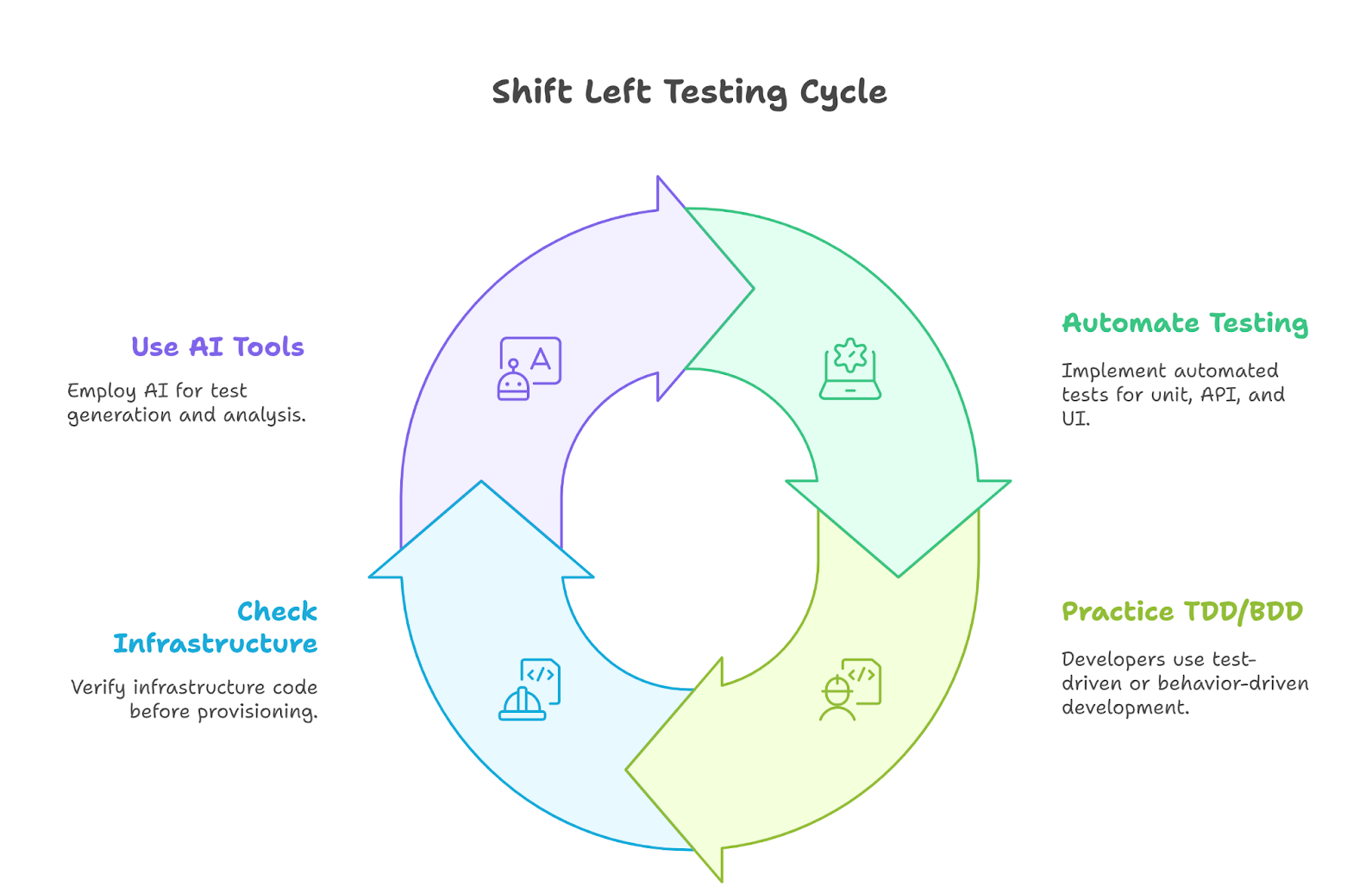
Real-Life Example:
At a fintech startup, developers write unit tests for loan eligibility logic during sprint planning using TDD. These tests are part of the CI pipeline.
Result: They catch logic issues within minutes of a commit, reducing production defects by 40% compared to last year.
What Is Shift Right Testing?
Shift Right means testing and learning from your software after it’s deployed — in staging or production. And no, it’s not “testing late” or accepting bad quality. It’s about building feedback loops that make your software stronger.
Common Shift Right practices in 2025:
- Gradual rollouts with feature flags (hello, LaunchDarkly!)
- Real-time performance and behavior monitoring
- Chaos engineering for failure resilience
- A/B testing and real-world usage analysis
It’s like running safety drills in your building, once people are already inside.
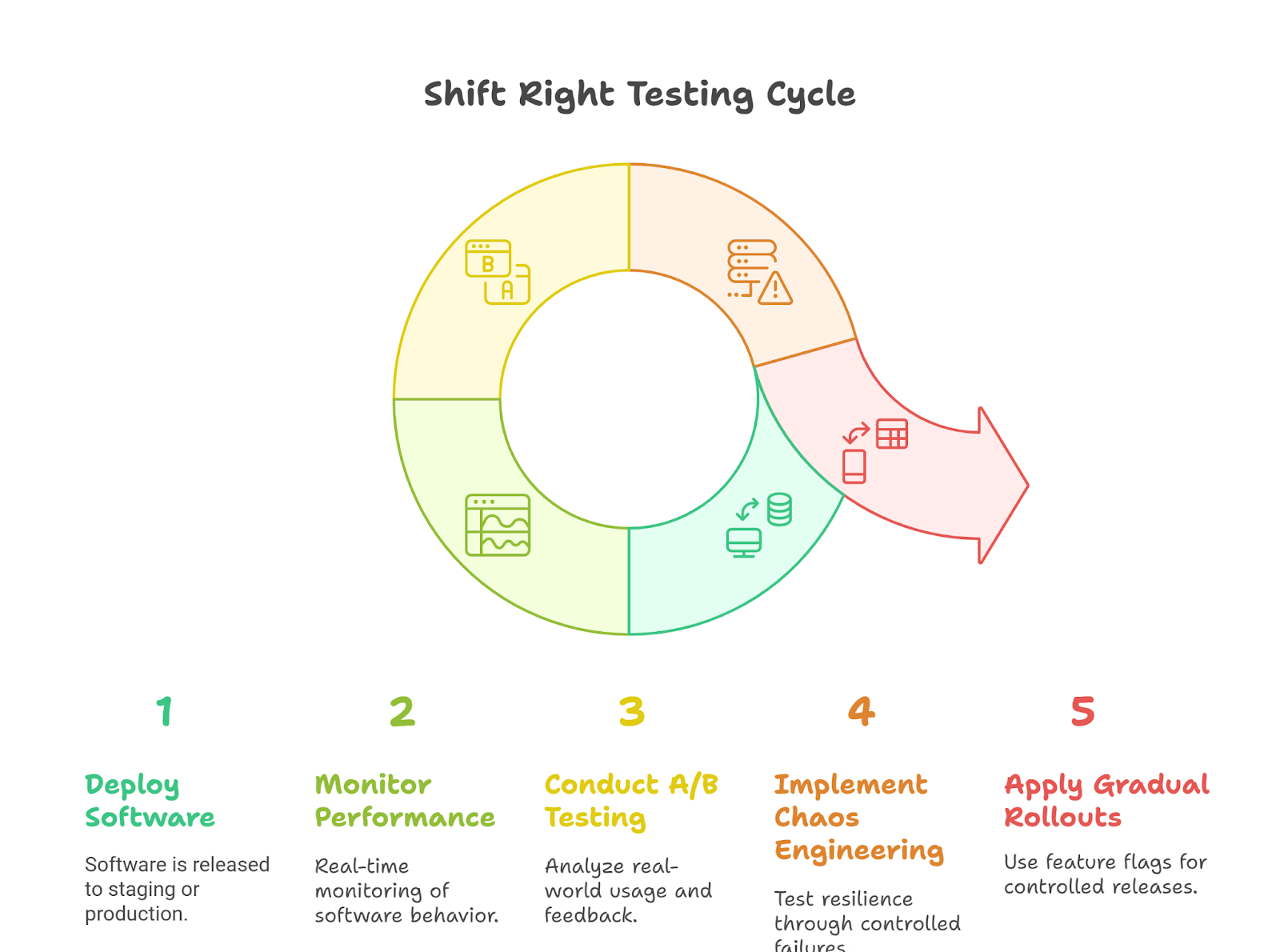
Real-Life Example:
An e-commerce platform releases a new recommendation engine to 10% of users via feature flags.
Observability tools show a 12% drop in click-through rates for the new engine within hours.
Action: The team rolls back the change, preventing a poor experience for 90% of users.
What’s Actually Working in 2025?
1. Shift Left Is Still Foundational — But Not Enough Alone
Most teams today have Shift Left baked into their pipelines. Tools like Playwright, Cypress, or Postman are standard fare for running fast, repeatable tests.
But overdoing it leads to a false sense of security.
Why? Because a perfect CI test passes ≠ , perfect customer experiences.
You still need to observe what’s happening in the wild.
2. Shift Right = Real-Time Learning, Not Last-Minute Fixes
Too many teams confuse Shift Right with fixing bugs post-launch. But in 2025, it’s about proactively learning how your product behaves in the hands of real users.
Use cases that are winning:
- Releasing features to 5% of users with monitoring in place
- Using Dynatrace or Datadog to track crash rates and latency
- Running chaos experiments with tools like Gremlin
One team deployed a new checkout flow under a feature flag. Within 24 hours, metrics showed a 9% drop in conversions. They rolled it back before most customers ever saw it.
That’s Shift Right done right.
Example:
A health-tech firm uses Gremlin to simulate API gateway outages.
- Finding: Recovery time was 7 minutes.
- Fix: Implemented retry logic + faster alerting.
- Outcome: Post-fix recovery is now under 2 minutes.
Shift Testing in 2025: What the Research Says
- 74% of high-performing teams use both Shift Left and Shift Right strategies — [State of DevOps 2025 Report]
- Shift Right adopters saw 28% fewer rollback incidents after adopting real-time observability tools — [Honeycomb.io Survey]
- Teams using feature flags and gradual rollouts report a 31% increase in release confidence — [LaunchDarkly Trends 2025]
Also Read: Getting Started with Testim.io: Installation & First Codeless Test
3. High-Performing Teams Combine Both
Forget Left vs. Right — in 2025, it’s all about blending the two.
What great teams are doing:
- Devs own fast feedback loops via Shift Left testing
- QA builds smart test strategies and risk-based automation
- DevOps and SREs own observability and recovery post-deploy
- Product teams validate UX impact with A/B testing and metrics
Testing isn’t a checkbox anymore — it’s a conversation across teams.
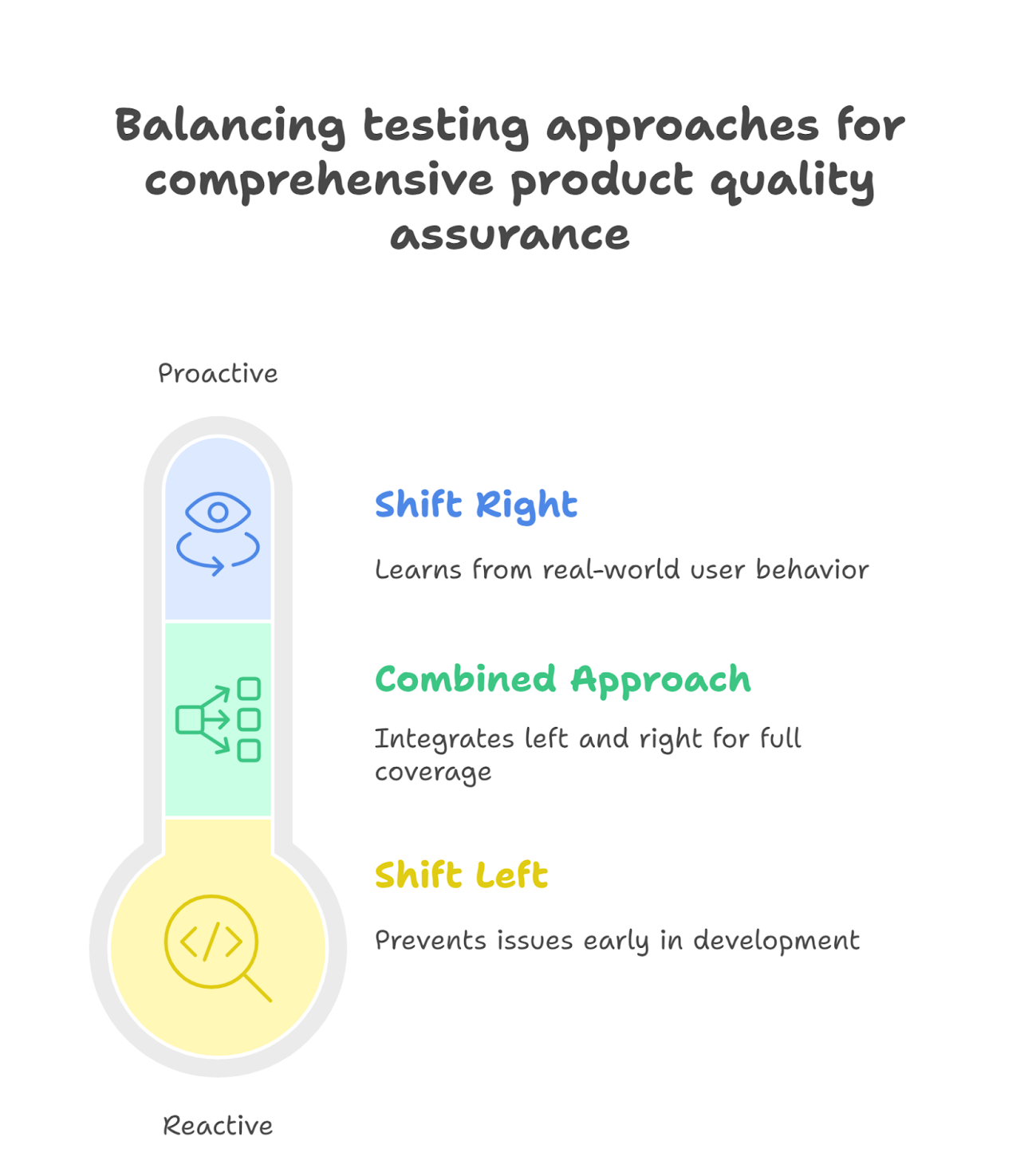
Quick Comparison: Shift Left vs. Shift Right
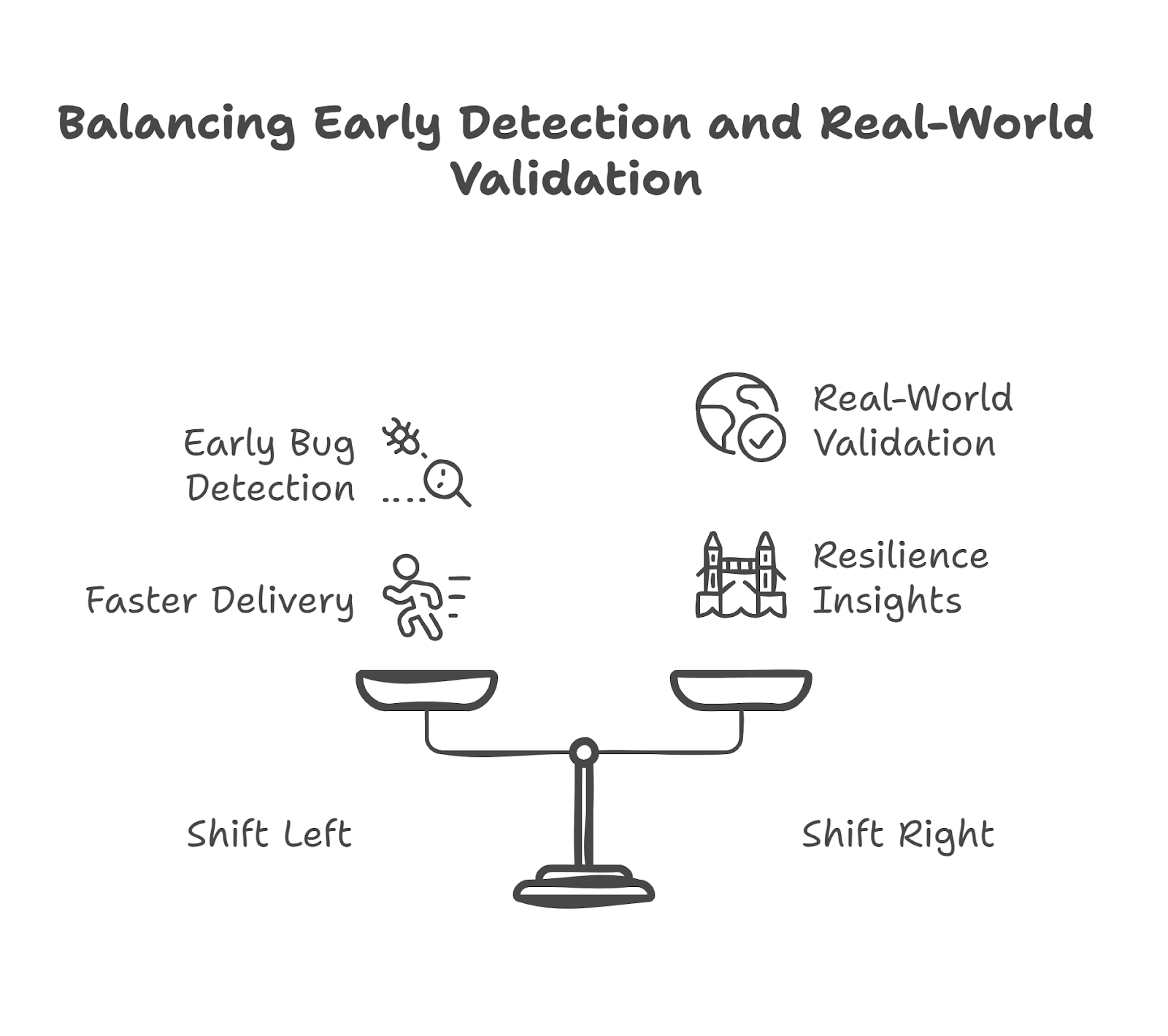
Common Myths to Drop
Myth 1: “Shift Right means we’re testing late.”
Reality: It’s about building confidence through real-world validation.
Myth 2: “We do Shift Left — Shift Right isn’t needed.”
Reality: They’re complements, not competitors.
Myth 3: “QA is less valuable in Shift Left.”
Reality: QA’s role expands — influencing dev, infra, and production quality.
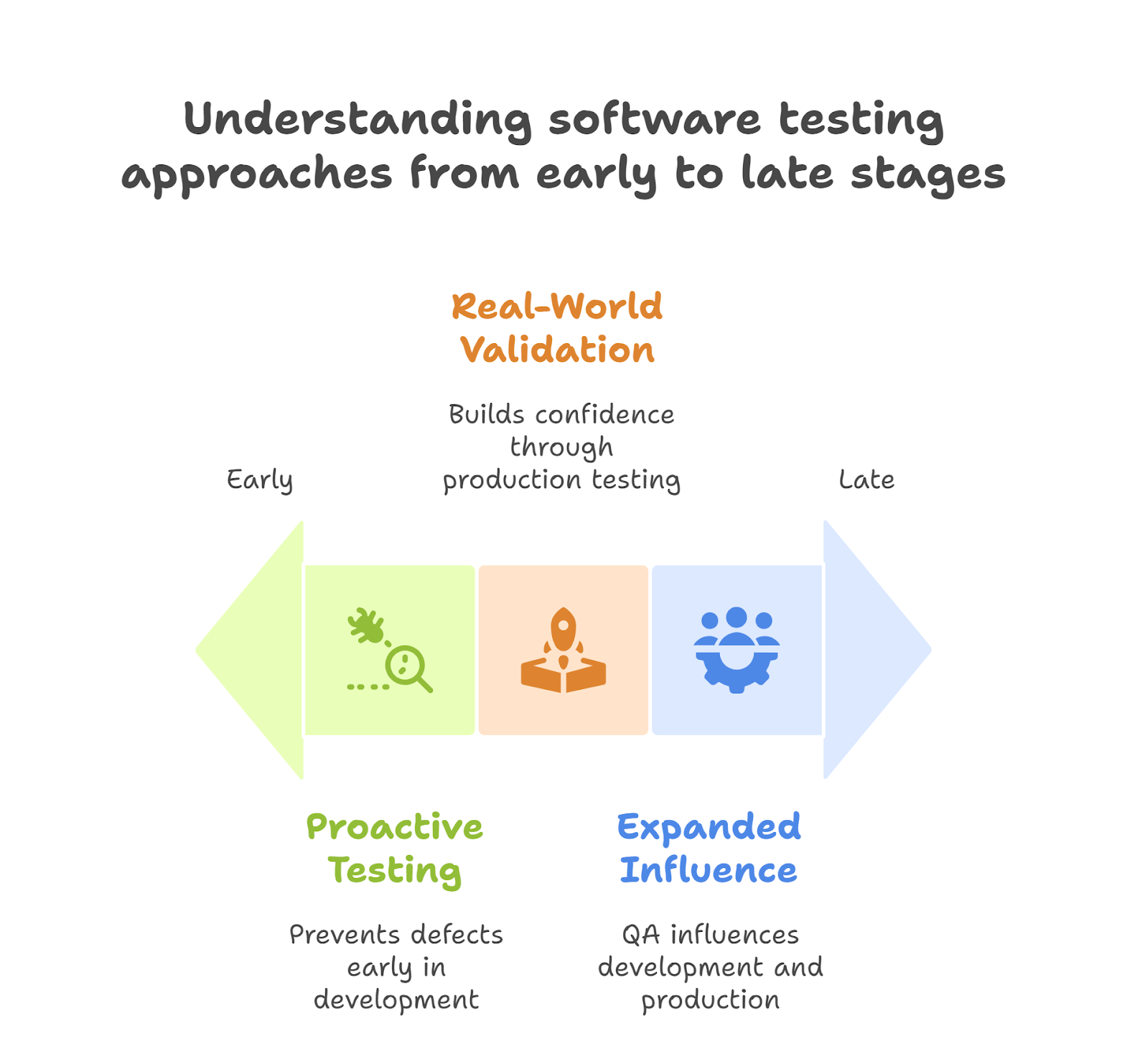
What Winning Teams Are Doing in 2025
Here’s what’s working across high-performing QA cultures:
- Building feature toggles into every release
- Using AI to auto-generate edge-case test coverage
- Tracking deployment health via observability dashboards
- Involving testers in story grooming & sprint planning
- Running automated smoke + chaos tests pre-release
Everyone plays a role in delivering quality — not just QA.
Also Read: Automation Testing in FinTech: Streamlining QA with Advanced Tools and APIs
Conclusion: In 2025, Quality Is a Continuous Loop
The old-school idea of testing as a “phase” is gone.
Today, it’s about enabling continuous quality — from the first line of code to live production traffic.
Teams that combine Shift Left and Shift Right don’t just ship faster — they ship better.
It’s not “which strategy should we use?”
It’s “how can we make both work smarter for us?”
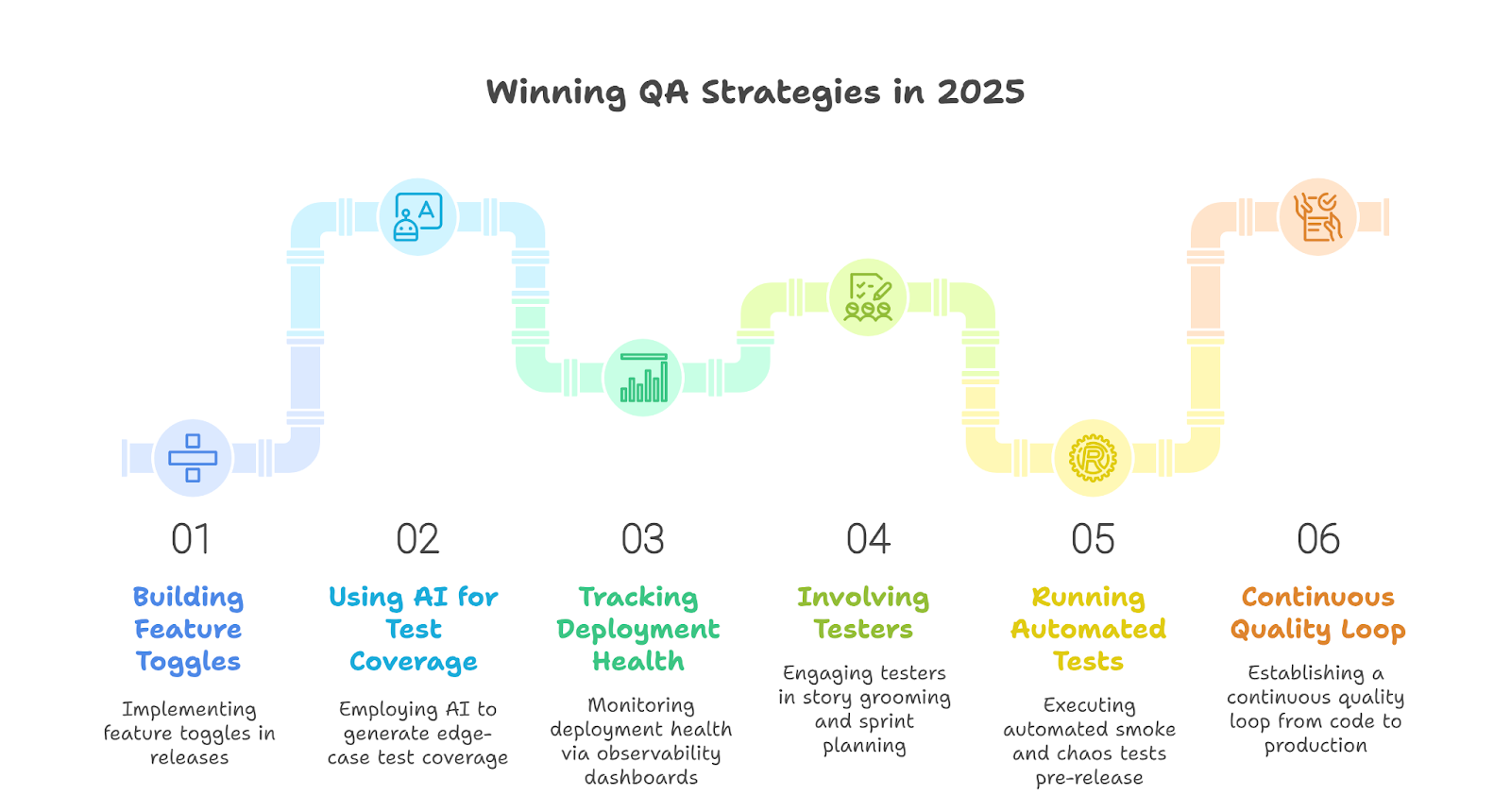
Call to Action
Still treating Shift Left and Shift Right as an either/or? Time to evolve your QA mindset.
Start blending both in your next release
Add one Shift Right technique to your sprint this week
Share this post with your team to spark discussion
Quality isn’t just a goal — it’s your product’s foundation. Let’s build it right.
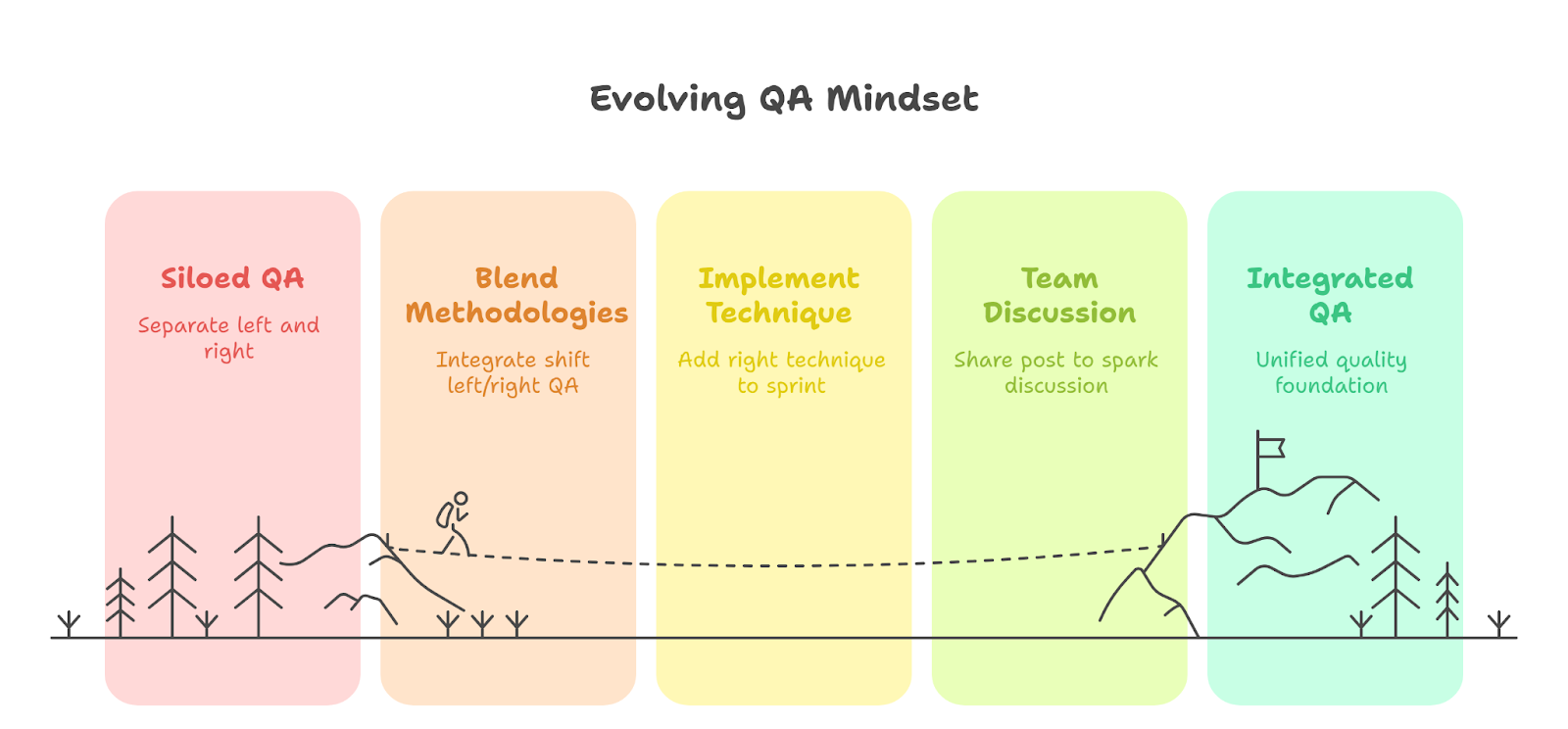
Discover More About QA Services
sales@qable.ioDelve deeper into the world of quality assurance (QA) services tailored to your industry needs. Have questions? We're here to listen and provide expert insights


As a Delivery Manager in Software Quality Assurance, I lead QA strategy and execution across diverse projects, ensuring timely, high-quality product releases. I work closely with QA engineers and business stakeholders to align on goals, manage risks, and drive continuous improvement. With a focus on collaboration, accountability, and delivery excellence, I help organizations achieve reliable, scalable, and value-driven QA outcomes.
.svg)














.webp)
.webp)
.png)
.png)











.png)



.png)

.png)

.png)



















.webp)

